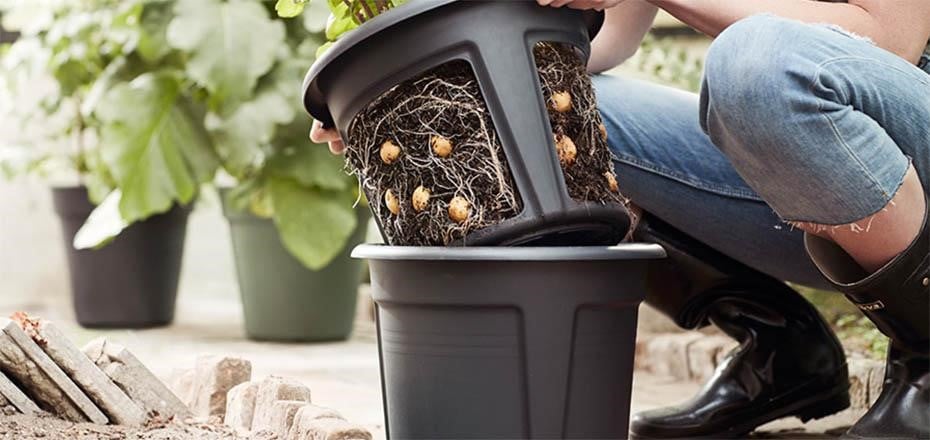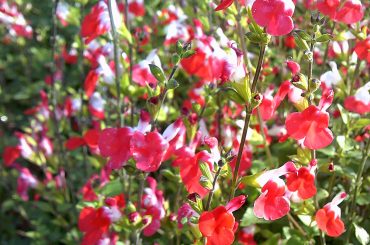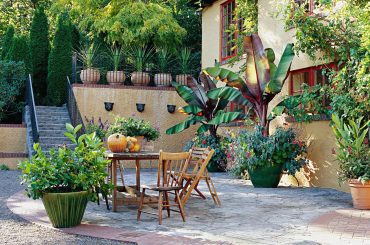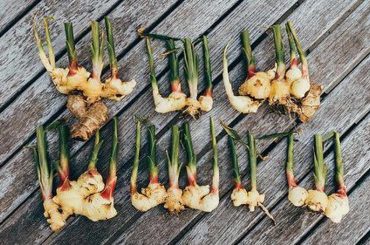Table of Contents
Since the year 2020 made us discover hidden talents and hobbies, kitchen gardening also made it to this list. Now that we are diving towards adopting a much healthier lifestyle, kitchen gardening has been a big hit, successfully taking a rather integral role in our lives. By the means of practicing this, we are not only fulfilling our hobby but more importantly, we can receive vegetables that are pesticides free and, also consists of higher nutrition value.
Having said that, we have various options to look forward to, potato is one of the staple foods which not only offers buck load of nutrition but also has medicinal value, plus it is also easy to harvest. Consumption of potatoes is so enormous all around the globe, that it is impossible to imagine veg-cuisine without it.
Though potatoes are conventionally grown on the ground, it would come to you as a surprise that it can be easily grown in pots too! Growing potatoes in pots are comparatively convenient since it is much easier to handle the whole process till the completion of the harvesting phase. Following, today we will map out the easiest ways by which harvesting potatoes in a pot may not look like a tedious job.
Before jotting down the methods, let us look at the preliminary techniques to consider beforehand:
- The type of potato to pick: It is far better to use the kind of potato that matures in comparatively less time. For this purpose, certified potato seeds are a wiser option as they are disease-free.
- Maturing cycle: generally, the cycle falls under the time frame of 70-90 days. It is important to track the maturing phase since a few potato breeds might take up to 120 days.
- Types of container and soil: most types of potatoes can easily grow in any type of soil. The important factor here is to select a larger container since the potatoes grow quickly and tend to take up space. Another factor that comes into play is, the container must have enough holes to provide a better drainage system. Well drainage system allows better growth as it lets the root breathe.
- Sunlight and temperate: 6-8 hours of sunlight exposure is necessary, and 60F (16C) is an ambient temperature suitable for better growth.
- Weather conditions: As already mentioned above that potato harvesting is feasible in most weather conditions yet keeping it away from the frost is cautionary.
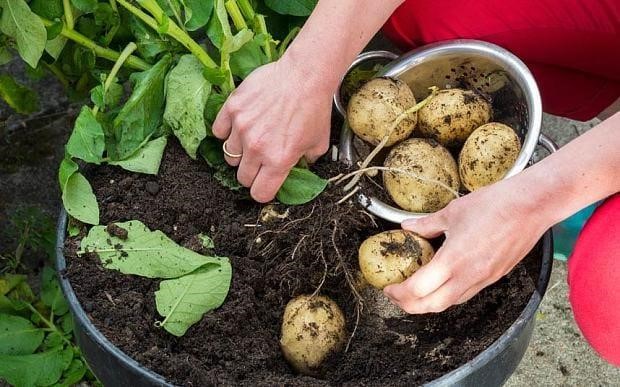
Methods to Grow Potato in A Pot
Preparing the Soil
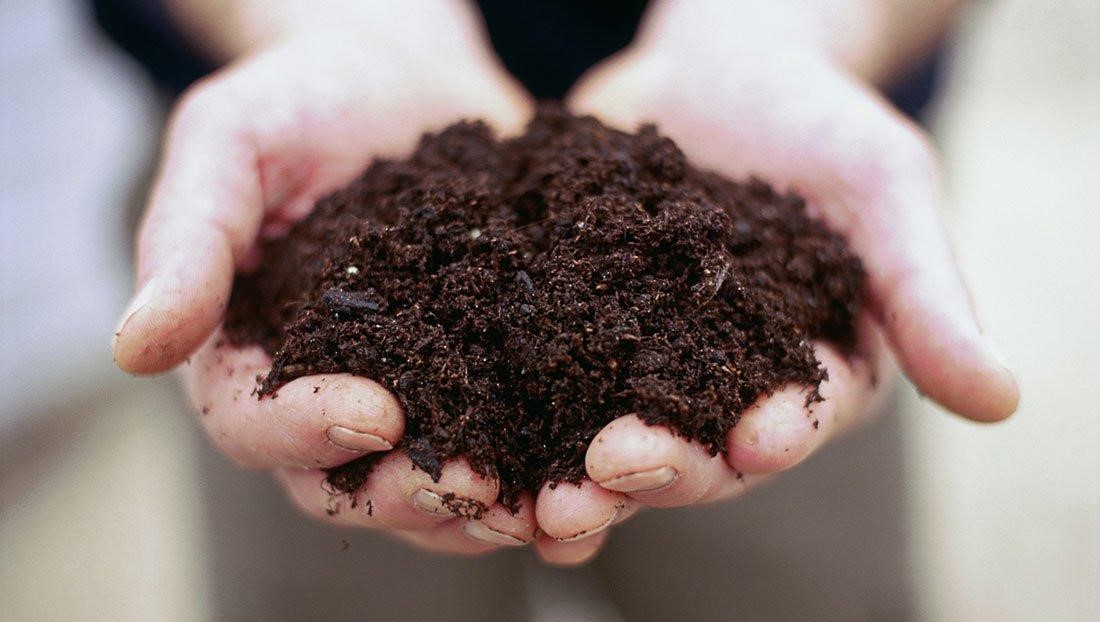
It is important to choose high-quality soil that would allow the water to drain at a much faster pace.
Adding the Fertilizer
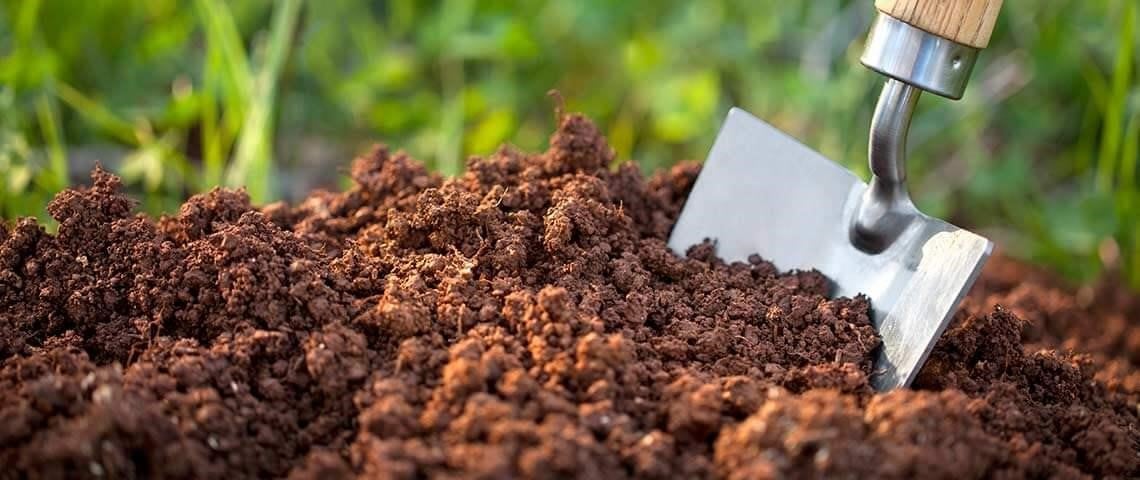
It is way better to use diluted liquid fertilizer for example fish emulsion for a couple of weeks, especially during the initial period since potato requires plenty of water, liquid fertilizers go a long way.
Preparing the Seeds
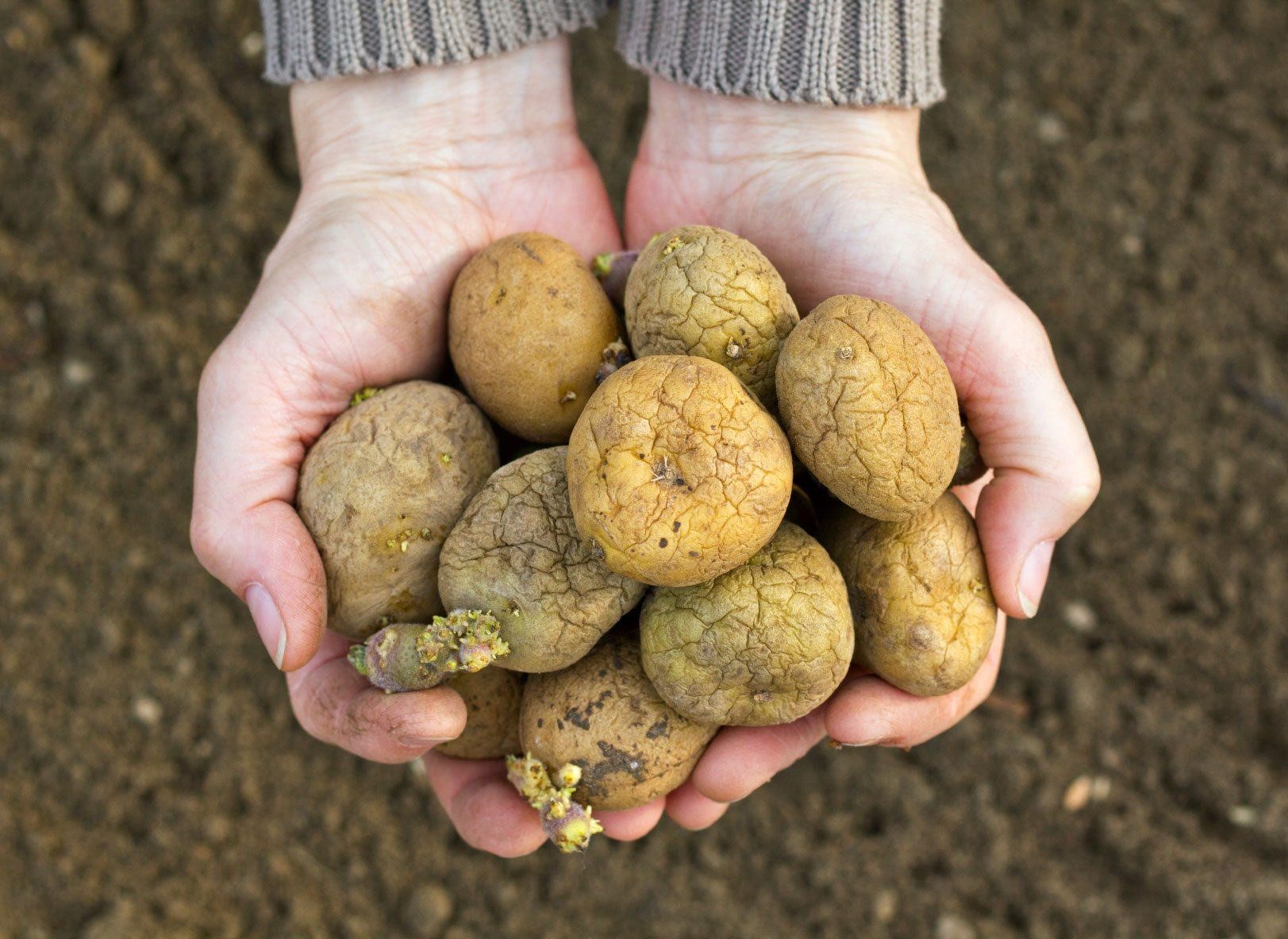
There are various ways to achieve this phase, the most popular amongst those are the two as follows:
- The first method is to wait for the potatoes to sprout on their own, then proceeding to the planting process.
- The second method is to plant the seeds immediately. The best and most effective way is to cut the potato seed into two pieces containing at least two eyes because, from these eyes, the shoots will appear.
After the completion of this stage, the prepared seed is then left to sit for a couple of days to start the process of germination.
The Setup
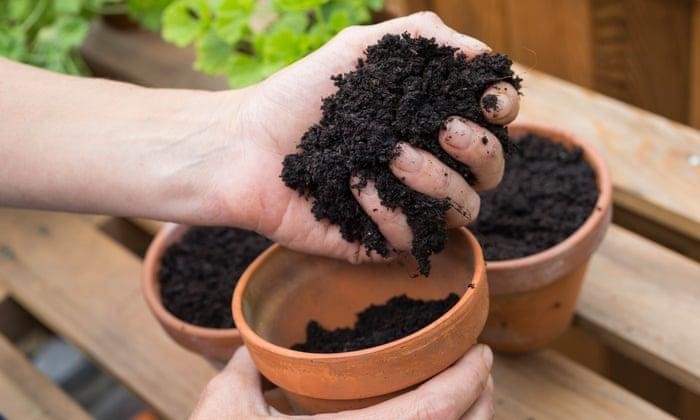
The soil must be potted in around 4 inches of dept which must be blended with the liquid fertilizers. While placing the seed potato, it is necessary to direct the eyes in the upward direction since it grows in the tubular form. During this whole process, it is of utmost importance to allow the whole setup to breathe.
Under the Blanket of Soil
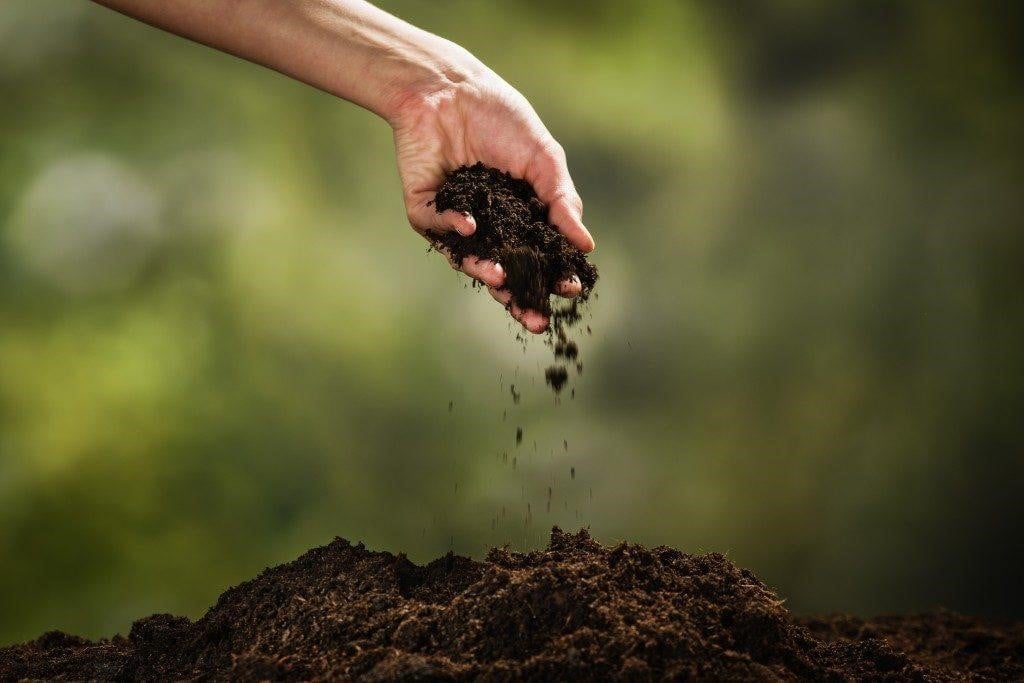
After setting up the whole arrangement, try not to go overboard while covering it with the soil, 1 – 4 inches would be sufficient. The measurement to know when not to overdo it is to keep track, the cooler the temperature the lesser the soil will be required.
Positioning
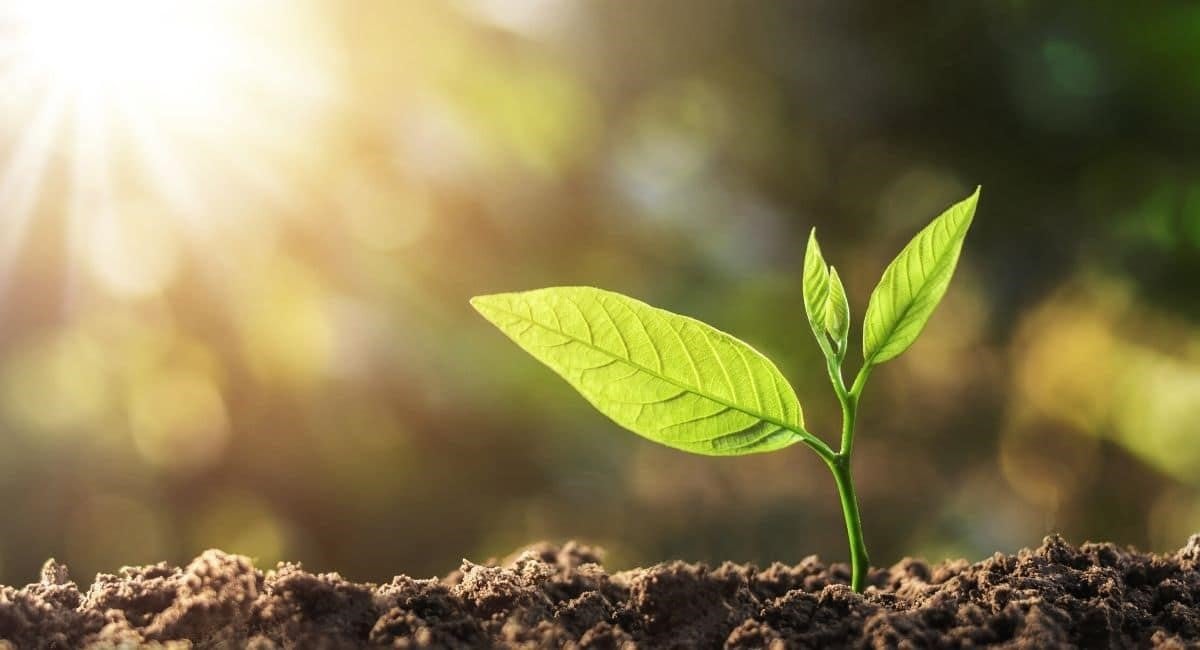
It is essential to place the setup where it can receive 6 – 8 hours of sunlight every day. Plus, it is important to draw a line between enough amount of moisture and soaking wet soil.
To know better, what is a better way than sticking out your fingers at least an inch into the soil to have a better understanding of the amount and frequency for the watering purpose. It is important to water it in a way that it may drain till the roots.
The “Hilling” Process
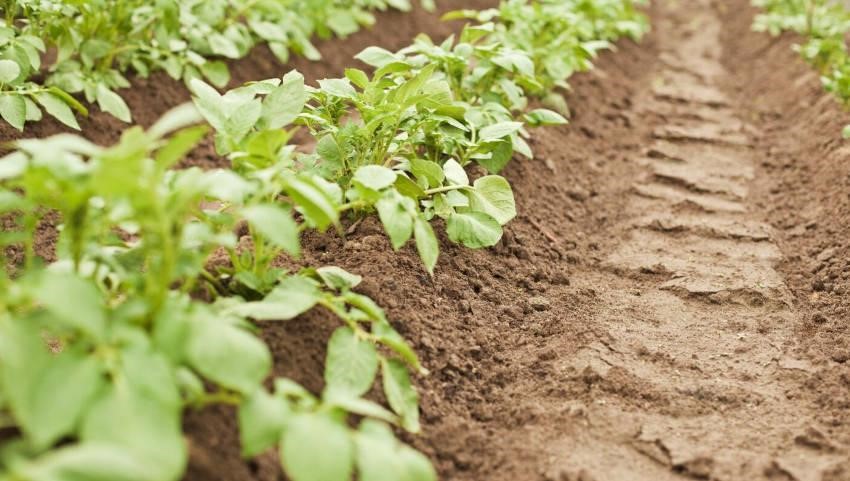
Once it has matured for 6 inches or so, the next step includes it to arrange them in a hill fashion. This step requires the addition of a couple of inches of prepared soil around the planted potatoes, which allows it to envelope the plant from stem to bottom.
Since it is a delicate process, it is necessary to take precautions. The goal is to cover one-third part of the plant because, from the buried stems, more potatoes tend to grow. It is necessary to repeat this process a couple of times during the whole harvesting period to gain a surplus amount.
Harvesting Period
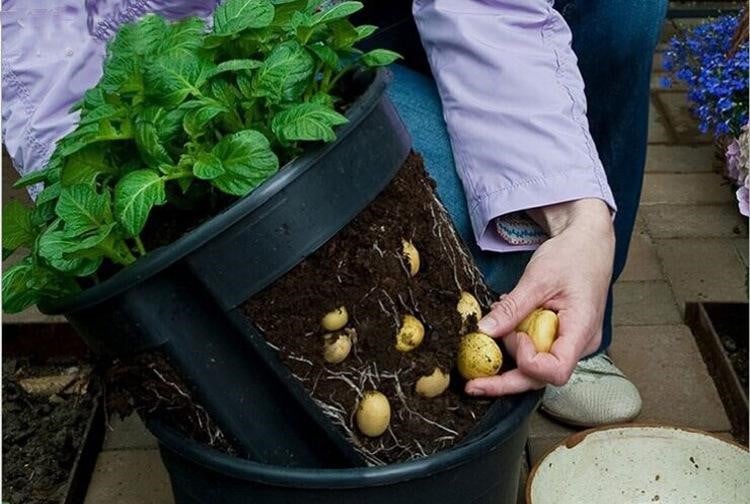
Flowering marks the stage where the process of harvesting takes place. Pulling out the roots should be done delicately. If in case, the plant seed turns yellow, so it will better harvest all at once. Before you plan on pawing the soil, make sure it is loose enough so that it would not make it more complicated.
Caution!
If there is a green-skinned potato, discard it once discovered as it contains a bitter chemical called Solarine which is toxic in nature, which may cause digestive problems.

